
|
Now it is very bright as 8.7 mag (Feb. 14, Thomas Lehmann). It brightened temporarily in outburst in early January, but it returned to the original brightness. It will pass close to the earth from spring to summer, and it is expected to brighten up to 5-6 mag. Now it is not observable. In the Northern Hemisphere, it will appear in the morning sky again in late April, but it locates low in the south around the high light. In the Southern Hemisphere, it will be observable in excellent condition after appearing in the morning sky again in mid April.
Date(TT) R.A. (2000) Decl. Delta r Elong. m1 Best Time(A, h)
Mar. 5 23 34.83 6 23.4 2.424 1.486 14 8.1 19:58 ( 84,-19)
Mar. 12 23 34.77 5 32.4 2.415 1.441 8 7.9 19:47 ( 81,-22)
|

|
Now it is so bright as 9.2 mag (Mar. 1, Juan Jose Gonzalez). It is observable at 9-10 mag until spring in excellent condition in the Northern Hemisphere. It keeps unobservable in the Southern Hemisphere.
Date(TT) R.A. (2000) Decl. Delta r Elong. m1 Best Time(A, h)
Mar. 5 14 29.89 71 22.0 1.834 2.330 107 9.8 3:39 (180,-16)
Mar. 12 13 43.53 70 59.7 1.847 2.365 109 10.0 2:26 (180,-16)
|
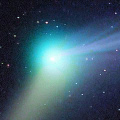
|
Now it is 9.4 mag (Mar. 3, Maik Meyer). It was expected to brighten up to 4-5 mag from autumn to winter. But actually, it was 6 mag at best. It will be fading rapidly after this. It is observable in excellent condition in the Northern Hemisphere. It is not observable after this in the Southern Hemisphere.
Date(TT) R.A. (2000) Decl. Delta r Elong. m1 Best Time(A, h)
Mar. 5 4 8.95 56 37.6 1.806 2.025 87 10.0 19:58 (159, -8)
Mar. 12 4 11.08 54 11.9 2.022 2.117 81 10.5 19:47 (156, -7)
|
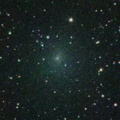
|
Now it is very bright as 10.6 mag (Mar. 4, Chris Wyatt). It will pass only 0.036 a.u. from the earth on Mar. 21-22. It is expected to brighten very rapidly and reach up to 11 mag in March. In this apparition, it keeps observable in excellent condition both brightening and fading period. In the Northern Hemisphere, it will be unobservable temporarily in mid March. The orbital elements are similar to those of P/2016 BA14 ( PanSTARRS ).
Date(TT) R.A. (2000) Decl. Delta r Elong. m1 Best Time(A, h)
Mar. 5 5 46.18 -35 50.5 0.105 1.007 95 13.1 19:58 ( 79, 77)
Mar. 12 5 49.92 -48 2.5 0.068 0.997 90 12.1 19:47 ( 39, 70)
|

|
Now it is bright as 12.4 mag (Jan. 9, Seiichi Yoshida). It keeps 12 mag for a long time from 2015 autumn to 2016 summer. In the Northern Hemispehre, it keeps observable in good condition for a long time. It keeps unobservable in the Southern Hemisphere.
Date(TT) R.A. (2000) Decl. Delta r Elong. m1 Best Time(A, h)
Mar. 5 20 34.23 65 3.0 2.727 2.671 76 12.2 4:23 (208,-27)
Mar. 12 20 34.62 65 33.4 2.735 2.670 75 12.2 4:31 (205,-24)
|
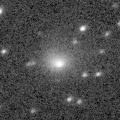
|
Now it is 12.7 mag (Feb. 29, Juan Jose Gonzalez). It will brighten up to 11 mag from spring to summer. In the Northern Hemisphere, it keeps observable in good condition while the comet will be brightening. It locates somewhat low in the Southern Hemisphere.
Date(TT) R.A. (2000) Decl. Delta r Elong. m1 Best Time(A, h)
Mar. 5 5 15.84 21 14.2 1.722 2.062 95 12.7 19:58 (154, 29)
Mar. 12 5 23.50 21 35.3 1.765 2.024 89 12.6 19:47 (152, 28)
|
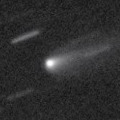
|
Now it is 13.4 mag (Feb. 11, Yasukazu Ikari). It will brighten up to 13 mag from winter to spring. It will be observable in excellent condition in the Southern Hemisphere. But it locates somewhat low in the Northern Hemisphere.
Date(TT) R.A. (2000) Decl. Delta r Elong. m1 Best Time(A, h)
Mar. 5 15 44.63 -20 48.4 1.731 2.220 105 13.3 4:23 (207, 74)
Mar. 12 15 50.61 -21 21.9 1.663 2.228 111 13.3 4:31 (181, 76)
|

|
Now it is bright as 13.8 mag (Feb. 27, Michael Jager). Although it was faint as 19.0 mag in January (Jan. 10, B. Lutkenhoner), it brightened rapidly. It is observable at 14 mag until spring. But it locates extremely low in the Southern Hemisphere. The brightness differs in every apparition. It was not observed in the last apparition.
Date(TT) R.A. (2000) Decl. Delta r Elong. m1 Best Time(A, h)
Mar. 5 1 25.43 9 11.6 1.822 1.215 38 14.1 19:58 (103, 2)
Mar. 12 1 50.75 10 46.7 1.813 1.197 37 13.8 19:47 (105, 2)
|
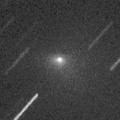
|
First return of an object discovered as an asteroid 2007 VA85 in 2007. It approached to the earth down to 0.5 a.u. in February. Now it is very bright as 11.5 mag (Mar. 1, Thomas Lehmann). It will be getting lower after this. It will be unobservable in mid March in the Southern Hemisphere, or in late April in the Northern Hemisphere.
Date(TT) R.A. (2000) Decl. Delta r Elong. m1 Best Time(A, h)
Mar. 5 4 12.16 15 29.5 0.865 1.190 79 13.8 19:58 (136, 26)
Mar. 12 3 54.86 21 38.9 1.040 1.160 69 14.0 19:47 (133, 17)
|

|
Appearing in the morning sky. Now it is faint as 17.1 mag (Mar. 3, Jean-Francois Soulier).
Date(TT) R.A. (2000) Decl. Delta r Elong. m1 Best Time(A, h)
Mar. 5 19 31.03 -26 9.6 6.481 5.957 54 13.9 4:23 (279, 35)
Mar. 12 19 35.57 -25 59.8 6.385 5.955 60 13.8 4:31 (276, 41)
|
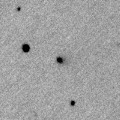
|
Now it is 16.2 mag (Feb. 19, P. C. Sherrod, L. P. Sherrod). Brightening very rapidly, although it is somewhat fainter than this ephemeris. It will be observable at 11 mag in good condition from spring to summer.
Date(TT) R.A. (2000) Decl. Delta r Elong. m1 Best Time(A, h)
Mar. 5 12 24.05 18 15.9 1.130 2.079 156 14.2 1:33 (180, 37)
Mar. 12 12 19.15 19 11.8 1.078 2.040 159 13.9 1:01 (180, 36)
|

|
It brightened up to 3.7 mag and became a naked eye comet in mid January in 2015 (Jan. 13, Marek Biely). Now it is fading. It has already faded down to 14.6 mag (Jan. 26, Ken-ichi Kadota). In the Northern Hemisphere, it keeps observable for a long time until the comet fades out. It locates somewhat low in the Southern Hemisphere.
Date(TT) R.A. (2000) Decl. Delta r Elong. m1 Best Time(A, h)
Mar. 5 18 29.31 22 4.7 5.196 4.991 72 13.9 4:23 (226, 17)
Mar. 12 18 30.89 22 36.2 5.184 5.056 77 14.0 4:31 (220, 21)
|
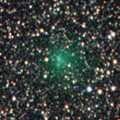
|
Now it is 11.8 mag (Jan. 8, Giuseppe Pappa). It is not observable now. It will appear in the morning sky in summer, but it will be fainter than 17 mag.
Date(TT) R.A. (2000) Decl. Delta r Elong. m1 Best Time(A, h)
Mar. 5 0 42.86 -4 11.7 2.665 1.813 24 14.0 19:58 ( 86, 1)
Mar. 12 0 59.69 -2 25.6 2.732 1.854 22 14.2 19:47 ( 87, 0)
|
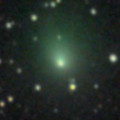
|
It is not observable now. It will appear in the morning sky in June. But the comet will be faint as 16-17 mag.
Date(TT) R.A. (2000) Decl. Delta r Elong. m1 Best Time(A, h)
Mar. 5 23 27.61 -6 13.5 3.002 2.018 6 14.1 19:58 ( 73,-13)
Mar. 12 23 42.70 -4 42.6 3.049 2.058 3 14.3 19:47 ( 74,-15)
|

|
Now it is 15.1 mag (Jan. 2, Ken-ichi Kadota). Distant object, but it keeps observable at 14-15 mag for a long time from 2015 to 2016. It becomes unobservable temporarily from January to March in the Southern Hemisphere, or from February to April in the Northern Hemisphere.
Date(TT) R.A. (2000) Decl. Delta r Elong. m1 Best Time(A, h)
Mar. 5 22 58.02 -3 46.2 5.911 4.920 2 14.8 4:23 (289,-19)
Mar. 12 23 5.24 -3 16.1 5.902 4.914 5 14.8 4:31 (284,-13)
|
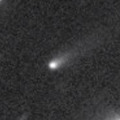
|
Now it is 15.2 mag (Feb. 11, Yasukazu Ikari). It is observable at 14-15 mag in good condition from winter to summer.
Date(TT) R.A. (2000) Decl. Delta r Elong. m1 Best Time(A, h)
Mar. 5 13 41.15 -6 49.3 1.545 2.381 138 15.0 2:50 (180, 62)
Mar. 12 13 37.30 -7 50.7 1.481 2.372 146 14.9 2:19 (180, 63)
|
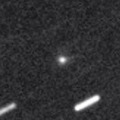
|
Now it is 16.2 mag (Feb. 17, La Silla--TRAPPIST). It will be observable at 14 mag in good condition from spring to summer.
Date(TT) R.A. (2000) Decl. Delta r Elong. m1 Best Time(A, h)
Mar. 5 19 4.86 -17 23.5 2.828 2.472 59 15.2 4:23 (266, 36)
Mar. 12 19 17.84 -16 58.9 2.747 2.462 63 15.1 4:31 (262, 41)
|
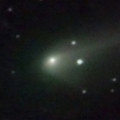
|
It brightened up to 11.1 mag in 2015 autumn (Sept. 21, Seiichi Yoshida). Now it is 14.5 mag (Feb. 15, Thomas Lehmann). It keeps observable in good condition after this, while the comet will be fading gradually.
Date(TT) R.A. (2000) Decl. Delta r Elong. m1 Best Time(A, h)
Mar. 5 11 52.43 11 46.4 1.531 2.507 166 15.2 1:02 (180, 43)
Mar. 12 11 44.51 12 22.7 1.573 2.558 170 15.4 0:26 (180, 43)
|
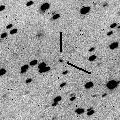
|
Now it is 18.6 mag (Feb. 13, M. M. Knight, M. S. P. Kelley, S. Protopapa, M. Micheli). It will pass only 0.024 a.u. from the earth on Mar. 23. It is expected to brighten very rapidly and reach up to 12 mag in March. It is observable in excellent condition in the Northern Hemisphere. In the Southern Hemisphere, it keeps observable in excellent condition until mid March, but it will be low after that. The orbital elements are similar to those of 252P/LINEAR.
Date(TT) R.A. (2000) Decl. Delta r Elong. m1 Best Time(A, h)
Mar. 5 5 54.03 -33 44.3 0.142 1.019 97 16.3 19:58 ( 93, 78)
Mar. 12 6 13.49 -29 42.2 0.089 1.010 97 15.3 19:47 (113, 77)
|

|
It will approach to the sun down to 0.58 a.u. on Mar. 9, and brighten up to 15 mag. But it is not observable around the perihelion passage. It will appear in the evening sky at 17 mag in late March. But it will fade out very rapidly.
Date(TT) R.A. (2000) Decl. Delta r Elong. m1 Best Time(A, h)
Mar. 5 23 54.41 -2 35.6 1.504 0.584 13 15.5 19:58 ( 80,-10)
Mar. 12 0 39.30 0 41.3 1.437 0.579 17 15.4 19:47 ( 87, -6)
|
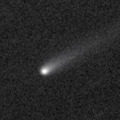
|
It brightened very rapidly in 2015 spring, and reached up to 13.8 mag (May 11, Sandor Szabo). It is bright as 14.3 mag still now (Feb. 11, Yasukazu Ikari). It keeps 15 mag for a while until spring. It is observable in excellent condition in the Southern Hemisphere. But it locates somewhat low in the Northern Hemisphere.
Date(TT) R.A. (2000) Decl. Delta r Elong. m1 Best Time(A, h)
Mar. 5 14 16.02 -29 37.4 3.317 3.929 121 15.6 3:25 (180, 85)
Mar. 12 14 15.13 -29 55.4 3.261 3.954 128 15.6 2:56 (180, 85)
|

|
Now it is 16.2 mag (Feb. 7, Hiroshi Abe). It will brighten up to 14 mag in summer. But it is not observable at the highlight. It keeps observable until March while the comet will be brightening gradually up to 15-16 mag.
Date(TT) R.A. (2000) Decl. Delta r Elong. m1 Best Time(A, h)
Mar. 5 2 9.06 5 54.1 2.678 2.142 47 16.3 19:58 (106, 12)
Mar. 12 2 22.30 7 10.7 2.715 2.123 44 15.8 19:47 (107, 11)
|
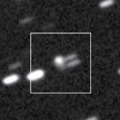
|
Now it is 15.9 mag (Feb. 11, Catalina Sky Survey). It is expected to brighten up to 7 mag in 2017 summer. In the Northern Hemisphere, it keeps observable in good condition until the highlight while the comet will be brightening. In the Southern Hemisphere, it is not observable until early 2017.
Date(TT) R.A. (2000) Decl. Delta r Elong. m1 Best Time(A, h)
Mar. 5 6 45.86 63 9.1 5.064 5.434 106 15.9 19:58 (179, -8)
Mar. 12 6 43.25 62 41.7 5.088 5.372 101 15.8 19:47 (177, -8)
|
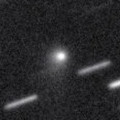
|
Now it is 15.6 mag (Feb. 11, Yasukazu Ikari). It keeps 15-16 mag for a long time until 2016. It keeps observable in excellent condition in the Northern Hemisphere. It keeps unobservable in the Southern Hemisphere.
Date(TT) R.A. (2000) Decl. Delta r Elong. m1 Best Time(A, h)
Mar. 5 2 56.60 72 13.6 5.272 5.307 86 15.9 19:58 (163,-25)
Mar. 12 3 4.34 72 11.6 5.350 5.318 82 15.9 19:47 (163,-25)
|

|
It will graze the surface of the sun on Apr. 10. It will pass only 0.16 a.u. from the earth on Mar. 13, and will be observable in excellent condition.
Date(TT) R.A. (2000) Decl. Delta r Elong. m1 Best Time(A, h)
Mar. 5 15 55.37 -1 22.0 0.273 1.102 106 17.6 4:23 (197, 55)
Mar. 12 18 42.17 8 55.9 0.164 0.957 72 15.9 4:31 (230, 31)
|
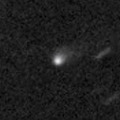
|
Now it is 16.3 mag (Feb. 11, Yasukazu Ikari). It will brighten up to 14 mag in 2017. In 2016, it keeps observable at 16 mag in good condition from winter to spring.
Date(TT) R.A. (2000) Decl. Delta r Elong. m1 Best Time(A, h)
Mar. 5 11 53.22 13 38.5 2.908 3.877 165 16.2 1:02 (180, 41)
Mar. 12 11 48.65 14 8.1 2.883 3.861 168 16.1 0:30 (180, 41)
|
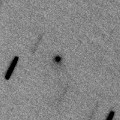
|
Now it is 15.5 mag (Feb. 11, Yasukazu Ikari). It brightened rapidly, and became brighter than originally expected. It keeps observable at 16 mag in good condition until May.
Date(TT) R.A. (2000) Decl. Delta r Elong. m1 Best Time(A, h)
Mar. 5 8 12.94 20 46.4 1.821 2.628 136 16.3 21:18 (180, 34)
Mar. 12 8 8.19 24 0.5 1.882 2.607 127 16.3 20:46 (180, 31)
|

|
It brightened up to 11-12 mag in 2012. It has already faded down to 17.1 mag (Feb. 8, Catalina Sky Survey). It is observable at 16-17 mag in good condition from winter to spring.
Date(TT) R.A. (2000) Decl. Delta r Elong. m1 Best Time(A, h)
Mar. 5 10 46.20 -5 34.4 10.082 11.052 167 16.3 23:51 (180, 61)
Mar. 12 10 42.90 -5 15.0 10.125 11.090 165 16.4 23:20 (180, 60)
|
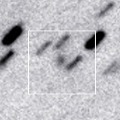
|
Now it is 16.1 mag (Feb. 3, Yasukazu Ikari). It keeps 16-17 mag for a long time from 2016 to 2019. It keeps locating near by the equator.
Date(TT) R.A. (2000) Decl. Delta r Elong. m1 Best Time(A, h)
Mar. 5 7 57.99 1 18.4 9.330 10.039 133 16.4 21:04 (180, 54)
Mar. 12 7 57.36 1 38.1 9.397 10.028 127 16.4 20:35 (180, 53)
|
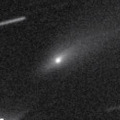
|
Now it is 17.2 mag (Feb. 18, D. Buczynski). In the Northern Hemisphere, it keeps observable in good condition after this while the comet will be fading. It locates low in the Southern Hemisphere.
Date(TT) R.A. (2000) Decl. Delta r Elong. m1 Best Time(A, h)
Mar. 5 14 17.04 27 53.0 2.299 3.025 129 16.4 3:26 (180, 27)
Mar. 12 14 12.09 28 47.7 2.299 3.071 133 16.5 2:53 (180, 26)
|
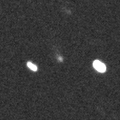
|
Now it is 16.3 mag (Feb. 2, Yasukazu Ikari). It keeps 16-17 mag for a long time until 2016 autumn. In the Southern Hemisphere, it keeps observable in good condition for a long time. In the Northern Hemisphere, it is observable only until March.
Date(TT) R.A. (2000) Decl. Delta r Elong. m1 Best Time(A, h)
Mar. 5 3 39.95 -28 40.8 2.766 2.579 68 16.5 19:58 ( 85, 49)
Mar. 12 3 42.29 -28 49.2 2.799 2.545 65 16.5 19:47 ( 83, 46)
|
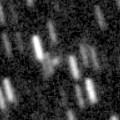
|
Now it is 17.7 mag (Feb. 5, La Silla--TRAPPIST). It keeps 16.5 mag for a long time in 2016, and it will be observable in excellent condition in the Southern Hemisphere. It is hardly observable in the Northern Hemisphere.
Date(TT) R.A. (2000) Decl. Delta r Elong. m1 Best Time(A, h)
Mar. 5 3 40.53 -51 25.3 3.586 3.420 72 16.6 19:58 ( 49, 52)
Mar. 12 3 35.72 -49 24.8 3.631 3.410 69 16.6 19:47 ( 53, 49)
|
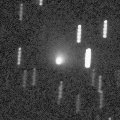
|
It kept brightening even after the perihelion passage, and brightened up to 13.0 mag (Dec. 21, Juan Jose Gonzalez). It keeps observable in excellent condition for a while. But it will be fading after this. It has already faded down to 15.4 mag (Feb. 7, Hiroshi Abe).
Date(TT) R.A. (2000) Decl. Delta r Elong. m1 Best Time(A, h)
Mar. 5 6 14.87 27 43.6 1.275 1.849 108 16.9 19:58 (171, 27)
Mar. 12 6 27.77 28 24.3 1.377 1.889 104 17.2 19:47 (170, 26)
|

|
Now it is 17.6 mag (Feb. 6, M. Jaeger, E. Prosperi, S. Prosperi, W. Vollmann). It will brighten up to 16 mag from March to June. It is observable in excellent condition in the Southern Hemisphere. It locates somewhat low in the Northern Hemisphere.
Date(TT) R.A. (2000) Decl. Delta r Elong. m1 Best Time(A, h)
Mar. 5 15 44.08 -14 0.3 1.488 2.022 107 17.1 4:23 (199, 68)
Mar. 12 15 49.36 -15 46.8 1.410 2.017 112 16.9 4:30 (180, 71)
|

|
Now it is 16.6 mag (Feb. 19, D. Buczynski). It keeps observable at 17 mag in good condition from winter to spring.
Date(TT) R.A. (2000) Decl. Delta r Elong. m1 Best Time(A, h)
Mar. 5 15 12.65 2 28.6 1.929 2.547 117 17.0 4:21 (180, 53)
Mar. 12 15 14.43 2 42.5 1.867 2.557 123 17.0 3:55 (180, 52)
|
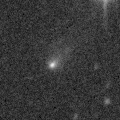
|
Now it is 16.8 mag (Feb. 7, Catalina Sky Survey). It must have been observable at 16-17 mag in good condition from summer to autumn in the Northern Hemisphere, but it was not discovered. It will be fading after this, and will be fainter than 18 mag in April.
Date(TT) R.A. (2000) Decl. Delta r Elong. m1 Best Time(A, h)
Mar. 5 11 18.82 29 43.4 1.757 2.694 156 17.0 0:29 (180, 25)
Mar. 12 11 4.75 28 8.5 1.810 2.740 154 17.2 23:41 (180, 27)
|
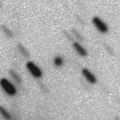
|
Now it is 16.9 mag (Feb. 5, Hiroshi Abe). It keeps observable in good condition for a while.
Date(TT) R.A. (2000) Decl. Delta r Elong. m1 Best Time(A, h)
Mar. 5 5 41.56 11 53.6 3.228 3.547 100 17.0 19:58 (157, 40)
Mar. 12 5 45.59 11 35.6 3.343 3.564 94 17.1 19:47 (153, 39)
|
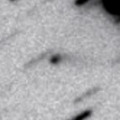
|
Now it is 16.8 mag (Feb. 11, Yasukazu Ikari). It keeps 17-18 mag for a long time until 2017 spring.
Date(TT) R.A. (2000) Decl. Delta r Elong. m1 Best Time(A, h)
Mar. 5 6 34.18 -14 12.1 3.455 3.911 110 17.1 19:58 (168, 69)
Mar. 12 6 35.31 -12 14.3 3.507 3.891 105 17.1 19:47 (160, 66)
|
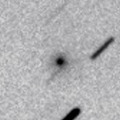
|
It brightened up to 16.0 mag in January (Jan. 18, Catalina Sky Survey). It will be fading after this, and will be fainter than 18 mag in Apri. It locates somewhat low in the Southern Hemisphere.
Date(TT) R.A. (2000) Decl. Delta r Elong. m1 Best Time(A, h)
Mar. 5 8 15.47 25 38.8 1.228 2.056 135 17.2 21:21 (180, 29)
Mar. 12 8 18.59 25 38.7 1.301 2.076 129 17.4 20:57 (180, 29)
|
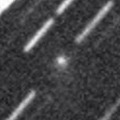
|
Now it is 17.2 mag (Feb. 11, Yuji Ohshima). It keeps observable at 17-18 mag until summer in the Northern Hemispehre. It is not observable after March in the Southern Hemisphere.
Date(TT) R.A. (2000) Decl. Delta r Elong. m1 Best Time(A, h)
Mar. 5 6 0.98 46 49.2 1.938 2.384 104 17.2 19:58 (171, 7)
Mar. 12 5 52.72 48 30.2 2.030 2.358 96 17.3 19:47 (168, 5)
|

|
It was observed as bright as 13-14 mag for a long time from 2011 to 2014. Now it is fading. It is observable in excellent condition in the Southern Hemisphere. It locates extremely low in the Northern Hemisphere.
Date(TT) R.A. (2000) Decl. Delta r Elong. m1 Best Time(A, h)
Mar. 5 18 13.81 -32 13.9 9.344 9.085 71 17.2 4:23 (279, 53)
Mar. 12 18 13.95 -32 34.5 9.260 9.119 78 17.2 4:31 (276, 60)
|
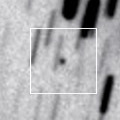
|
Now it is 17.1 mag (Jan. 17, K. Sarneczky, P. Szekely, T. Szalai). It brightened rapidly, and became brighter than originally expected. It keeps 17 mag until 2017. It is observable in excellent condition in the Northern Hemisphere. It is not observable in the Southern Hemisphere.
Date(TT) R.A. (2000) Decl. Delta r Elong. m1 Best Time(A, h)
Mar. 5 17 14.98 68 49.8 7.196 7.343 94 17.3 4:23 (191,-16)
Mar. 12 17 9.98 69 55.5 7.187 7.337 94 17.2 4:31 (187,-16)
|
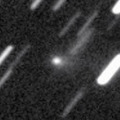
|
It brightened up to 15.7 mag in winter (Jan. 14, Toshiyuki Takahashi). Now it is fading. It has already faded down to 17.2 mag (Feb. 15, H. Boussier). It will be fainter than 18 mag in April. It locates somewhat low in the Southern Hemisphere.
Date(TT) R.A. (2000) Decl. Delta r Elong. m1 Best Time(A, h)
Mar. 5 7 47.94 28 54.2 1.614 2.363 128 17.3 20:54 (180, 26)
Mar. 12 7 49.93 29 28.2 1.687 2.369 121 17.4 20:28 (180, 26)
|
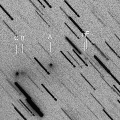
|
First return of a periodic comet which brightened up to 8 mag in major outburst in 2010. It will be observable in excellent condition from winter to spring. However, now it is faint; the fragment A is 17.8 mag (Feb. 24, Michael Jager), the fragment C is 17.8 mag (Feb. 24, Michael Jager), the fragment H is 18.5 mag (Feb. 24, Michael Jager). It will be 17 mag at best in this apparition. Fragments B to I are also observed in early February.
Date(TT) R.A. (2000) Decl. Delta r Elong. m1 Best Time(A, h)
Mar. 5 8 46.85 30 50.4 0.685 1.577 139 17.3 21:53 (180, 24)
Mar. 12 8 49.20 28 50.4 0.710 1.574 134 17.4 21:28 (180, 26)
|

|
Now it is 17.4 mag (Feb. 11, Yasukazu Ikari). It was expected to brighten up to 14 mag from winter to summer. But it is much fainter actually. It will be observable in excellent condition in the Southern Hemisphere. It locates low in the Northern Hemisphere.
Date(TT) R.A. (2000) Decl. Delta r Elong. m1 Best Time(A, h)
Mar. 5 16 9.78 -27 37.5 1.935 2.307 98 17.4 4:23 (241, 76)
Mar. 12 16 17.97 -29 1.4 1.880 2.327 103 17.4 4:31 (227, 82)
|
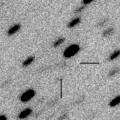
|
Now it is 18.7 mag (Jan. 14, Space Surveillance Telescope, Atom Site). It tends to be brightest after the perihelion passage. It is observable at 17 mag in excellent condition until March in the Northern Hemisphere. It locates low in the Southern Hemisphere.
Date(TT) R.A. (2000) Decl. Delta r Elong. m1 Best Time(A, h)
Mar. 5 5 59.86 35 42.2 1.145 1.698 104 17.4 19:58 (169, 18)
Mar. 12 6 15.71 34 22.8 1.196 1.700 101 17.5 19:47 (169, 20)
|
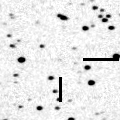
|
It was discovered around the aphelion in 2013 December. It keeps observable at 17 mag in good condition from 2016 to 2017. No observations have been reported since 2014 March.
Date(TT) R.A. (2000) Decl. Delta r Elong. m1 Best Time(A, h)
Mar. 5 12 56.59 2 44.8 2.121 3.030 151 17.6 2:06 (180, 52)
Mar. 12 12 52.28 3 14.1 2.048 2.998 159 17.4 1:34 (180, 52)
|
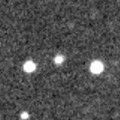
|
Now it is 17.5 mag (Feb. 16, H. Nohara). The cometary activity is confirmed recently. It is expected to brighten up to 7 mag in 2017 spring. But it locates somewhat low at the high light.
Date(TT) R.A. (2000) Decl. Delta r Elong. m1 Best Time(A, h)
Mar. 5 11 41.50 -5 17.1 4.451 5.415 165 17.6 0:51 (180, 60)
Mar. 12 11 37.38 -4 51.9 4.365 5.350 171 17.5 0:19 (180, 60)
|
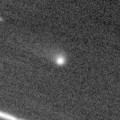
|
It brightened up to 16 mag in early 2015. Now it is 17.7 mag (Feb. 9, La Silla--TRAPPIST). It is observable at 18 mag from winter to spring.
Date(TT) R.A. (2000) Decl. Delta r Elong. m1 Best Time(A, h)
Mar. 5 9 14.04 -22 13.2 5.346 6.149 141 17.7 22:19 (180, 77)
Mar. 12 9 6.75 -21 24.9 5.408 6.174 137 17.8 21:44 (180, 76)
|
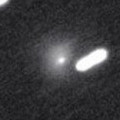
|
Very far object. Outburst occured on Feb. 20, 2015, and it brightened up to 15 mag. But it is faint as 18.5 mag now (Feb. 5, La Silla--TRAPPIST). . It is observable in excellent condition in the Southern Hemisphere. It locates somewhat low in the Northern Hemisphere.
Date(TT) R.A. (2000) Decl. Delta r Elong. m1 Best Time(A, h)
Mar. 5 13 31.36 -26 23.0 8.469 9.158 131 17.8 2:40 (180, 81)
Mar. 12 13 30.07 -26 19.6 8.393 9.160 138 17.7 2:11 (180, 81)
|
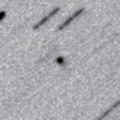
|
Now it is 17.4 mag (Feb. 11, Space Surveillance Telescope, Atom Site). It keeps 17.5 mag from 2016 to 2017. It is observable in good condition in the Northern Hemisphere. In the Southern Hemisphere, it locates low in 2016, and it is not observable in 2017.
Date(TT) R.A. (2000) Decl. Delta r Elong. m1 Best Time(A, h)
Mar. 5 17 26.72 17 48.0 6.522 6.534 86 17.8 4:23 (216, 29)
Mar. 12 17 28.18 19 2.0 6.421 6.520 91 17.8 4:31 (207, 31)
|
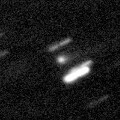
|
It brightened up to 15.2 mag in early 2015 (Feb. 24, Toshiyuki Takahashi). Now it is 17.5 mag (Dec. 6, Catalina Sky Survey). It will be fainter than 18 mag in April.
Date(TT) R.A. (2000) Decl. Delta r Elong. m1 Best Time(A, h)
Mar. 5 11 29.09 -5 23.7 3.868 4.839 166 17.8 0:38 (180, 61)
Mar. 12 11 25.80 -5 2.1 3.873 4.858 171 17.9 0:07 (180, 60)
|

|
First return of a peculiar asteroid 1998 HO121. It brightened up to 16.5 mag in early 2015 (Jan. 4, M. Jaeger, E. Prosperi, S. Prosperi, W. Vollmann). It is observable at 17.5 mag again in 2016 spring.
Date(TT) R.A. (2000) Decl. Delta r Elong. m1 Best Time(A, h)
Mar. 5 14 1.69 -7 7.7 2.753 3.511 133 17.9 3:10 (180, 62)
Mar. 12 14 0.58 -6 34.6 2.709 3.537 140 17.9 2:42 (180, 62)
|
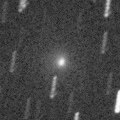
|
First return of a periodic comet discovered in 2003. It brightened up to 15.1 mag in December (Dec. 17, Space Surveillance Telescope, Atom Site). Now it is fading. It has already faded down to 17.7 mag (Feb. 18, D. Buczynski). It will be fainter than 18 mag in March. It is observable in excellent condition in the Northern Hemisphere. It locates low in the Southern Hemisphere.
Date(TT) R.A. (2000) Decl. Delta r Elong. m1 Best Time(A, h)
Mar. 5 5 47.00 37 56.7 1.452 1.925 102 17.9 19:58 (167, 16)
Mar. 12 6 1.66 38 29.9 1.554 1.963 98 18.2 19:47 (167, 15)
|
|
![]()
 C/2014 W11 ( PanSTARRS )
C/2014 W11 ( PanSTARRS ) 118P/Shoemaker-Levy 4
118P/Shoemaker-Levy 4 C/2015 V2 ( Johnson )
C/2015 V2 ( Johnson ) C/2013 V4 ( Catalina )
C/2013 V4 ( Catalina ) 321P/SOHO
321P/SOHO 65P/Gunn
65P/Gunn C/2015 Y1 ( LINEAR )
C/2015 Y1 ( LINEAR ) C/2006 S3 ( LONEOS )
C/2006 S3 ( LONEOS ) C/2014 B1 ( Schwartz )
C/2014 B1 ( Schwartz ) 19P/Borrelly
19P/Borrelly C/2015 T4 ( PanSTARRS )
C/2015 T4 ( PanSTARRS ) C/2015 B2 ( PanSTARRS )
C/2015 B2 ( PanSTARRS ) 230P/LINEAR
230P/LINEAR 100P/Hartley 1
100P/Hartley 1 180P/NEAT
180P/NEAT C/2015 YG1 ( NEOWISE )
C/2015 YG1 ( NEOWISE ) C/2015 X4 ( Elenin )
C/2015 X4 ( Elenin ) C/2015 X7 ( ATLAS )
C/2015 X7 ( ATLAS ) 204P/LINEAR-NEAT
204P/LINEAR-NEAT C/2015 W1 ( Gibbs )
C/2015 W1 ( Gibbs ) C/2010 S1 ( LINEAR )
C/2010 S1 ( LINEAR ) C/2014 R3 ( PanSTARRS )
C/2014 R3 ( PanSTARRS ) 211P/Hill
211P/Hill 332P/2015 Y2 ( Ikeya-Murakami )
332P/2015 Y2 ( Ikeya-Murakami ) C/2014 Y1 ( PanSTARRS )
C/2014 Y1 ( PanSTARRS ) 194P/LINEAR
194P/LINEAR P/2013 YG46 ( Spacewatch )
P/2013 YG46 ( Spacewatch ) C/2015 ER61 ( PanSTARRS )
C/2015 ER61 ( PanSTARRS ) C/2013 G9 ( Tenagra )
C/2013 G9 ( Tenagra ) C/2013 C2 ( Tenagra )
C/2013 C2 ( Tenagra ) C/2014 OE4 ( PanSTARRS )
C/2014 OE4 ( PanSTARRS ) 269P/2012 R2 ( Jedicke )
269P/2012 R2 ( Jedicke ) (347449) 2012 TW236
(347449) 2012 TW236 329P/2015 T1 ( LINEAR-Catalina )
329P/2015 T1 ( LINEAR-Catalina )![]()
















































